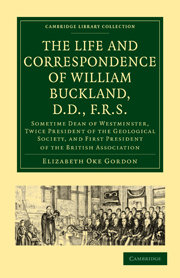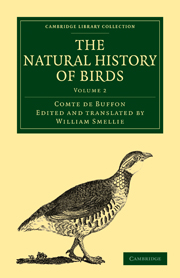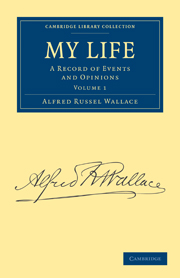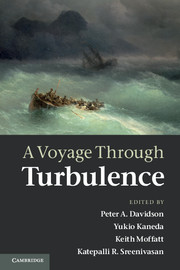Refine search
Actions for selected content:
10306 results in History of science: general interest
Acknowledgements
-
-
- Book:
- History of the Meteorological Office
- Published online:
- 05 December 2011
- Print publication:
- 14 November 2011, pp xxiii-xxiv
-
- Chapter
- Export citation
13 - Winds of Change
-
- Book:
- History of the Meteorological Office
- Published online:
- 05 December 2011
- Print publication:
- 14 November 2011, pp 401-454
-
- Chapter
- Export citation
8 - The Great War
-
- Book:
- History of the Meteorological Office
- Published online:
- 05 December 2011
- Print publication:
- 14 November 2011, pp 180-222
-
- Chapter
- Export citation
Additional Commentary
-
-
- Book:
- History of the Meteorological Office
- Published online:
- 05 December 2011
- Print publication:
- 14 November 2011, pp xxi-xxii
-
- Chapter
- Export citation
Foreword
-
-
- Book:
- History of the Meteorological Office
- Published online:
- 05 December 2011
- Print publication:
- 14 November 2011, pp xv-xx
-
- Chapter
- Export citation
6 - The Emergence of Science
-
- Book:
- History of the Meteorological Office
- Published online:
- 05 December 2011
- Print publication:
- 14 November 2011, pp 126-150
-
- Chapter
- Export citation
7 - A Decade of Change
-
- Book:
- History of the Meteorological Office
- Published online:
- 05 December 2011
- Print publication:
- 14 November 2011, pp 151-179
-
- Chapter
- Export citation
10 - The Clouds of War
-
- Book:
- History of the Meteorological Office
- Published online:
- 05 December 2011
- Print publication:
- 14 November 2011, pp 264-306
-
- Chapter
- Export citation
11 - Aftermath of War to Forecasting by Numbers
-
- Book:
- History of the Meteorological Office
- Published online:
- 05 December 2011
- Print publication:
- 14 November 2011, pp 307-353
-
- Chapter
- Export citation
Index
-
- Book:
- History of the Meteorological Office
- Published online:
- 05 December 2011
- Print publication:
- 14 November 2011, pp 455-468
-
- Chapter
- Export citation

A Description of Active and Extinct Volcanos, of Earthquakes, and of Thermal Springs
-
- Published online:
- 05 November 2011
- Print publication:
- 02 June 2011
- First published in:
- 1848

The Life and Correspondence of William Buckland, D.D., F.R.S.
- Sometime Dean of Westminster, Twice President of the Geological Society, and First President of the British Association
-
- Published online:
- 05 November 2011
- Print publication:
- 19 August 2010
- First published in:
- 1894
Life, DNA and the model
-
- Journal:
- The British Journal for the History of Science / Volume 46 / Issue 2 / June 2013
- Published online by Cambridge University Press:
- 20 October 2011, pp. 311-334
- Print publication:
- June 2013
-
- Article
- Export citation
The limits to ‘spin-off’: UK defence R & D and the development of gallium arsenide technology
-
- Journal:
- The British Journal for the History of Science / Volume 45 / Issue 1 / March 2012
- Published online by Cambridge University Press:
- 20 October 2011, pp. 97-121
- Print publication:
- March 2012
-
- Article
- Export citation
Gur, Ghur, Guhr or Bur? The quest for a metalliferous prime matter in early modern times
-
- Journal:
- The British Journal for the History of Science / Volume 46 / Issue 1 / March 2013
- Published online by Cambridge University Press:
- 20 October 2011, pp. 23-37
- Print publication:
- March 2013
-
- Article
- Export citation
The politics of participation: Francis Galton's Anthropometric Laboratory and the making of civic selves
-
- Journal:
- The British Journal for the History of Science / Volume 46 / Issue 3 / September 2013
- Published online by Cambridge University Press:
- 20 October 2011, pp. 445-466
- Print publication:
- September 2013
-
- Article
- Export citation
A Yahgan for the killing: murder, memory and Charles Darwin
-
- Journal:
- The British Journal for the History of Science / Volume 46 / Issue 3 / September 2013
- Published online by Cambridge University Press:
- 20 October 2011, pp. 415-443
- Print publication:
- September 2013
-
- Article
- Export citation

The Natural History of Birds
- From the French of the Count de Buffon; Illustrated with Engravings, and a Preface, Notes, and Additions, by the Translator
-
- Published online:
- 07 October 2011
- Print publication:
- 25 November 2010
- First published in:
- 1793

My Life
- A Record of Events and Opinions
-
- Published online:
- 07 October 2011
- Print publication:
- 16 June 2011
- First published in:
- 1905

A Voyage Through Turbulence
-
- Published online:
- 07 October 2011
- Print publication:
- 08 September 2011
